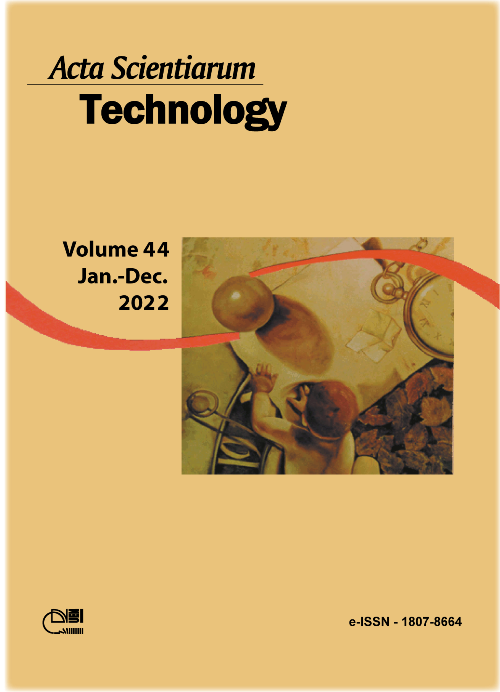Evaluation of new Egyptian flaxseed genotypes and pasta fortified with flaxseeds
DOI:
https://doi.org/10.4025/actascitechnol.v44i1.57014Keywords:
Flaxseed Sakha 5; fortification; α-linolenic acid; cooking quality; pasta sensory evaluation.Abstract
The present investigation was conducted to study yield, yield components and chemical composition of some flax genotypes (Sakha 3, 5 and 6, Giza 11, 12 and Strain 651). New flax strain 651 (S.651) recorded the highest value in technical length, while flax Giza 12 and 11 achieved the highest straw yields per plant and per hectare. Flax Giza 11 variety had the highest value of seed yield per hectare. With respect to chemical composition of flaxseed genotypes, flaxseed Sakha 5 variety had the lowest moisture content followed by Sakha 3, Sakha 6, Giza 12 and Giza 11. On the other hand, flaxseed S.651 genotype had the highest moisture and fiber contents. Flaxseed Sakha 5 had the highest oil content whereas; flaxseed Sakha 3 had the lowest oil content. Flaxseed Sakha 3 had the highest protein content followed by flaxseed S.651 and flaxseed Giza 12. Extracted oils from all genotypes had low values of physicochemical parameters. Main fatty acids of extracted flaxseed oil were linolenic, oleic, linoleic, stearic and palmitic fatty acids. Pasta was fortified with flaxseed at levels 5, 10 and 15% w w-1 to enhance the nutritional quality. Pasta samples were assessed for proximate analyses, minerals, cooking quality and sensory evaluation. Chemical composition of pasta fortified with flaxseed meal was reflective of the innate composition of flaxseed meal. There was no significant variance between control and flaxseed 5% in optimum cooking time. Sensory evaluation of pasta (control and flaxseed 5%) revealed no significant difference in terms of taste, color and overall acceptability
Downloads
Downloads
Published
How to Cite
Issue
Section
License
DECLARATION OF ORIGINALITY AND COPYRIGHTS
I Declare that current article is original and has not been submitted for publication, in part or in whole, to any other national or international journal.
The copyrights belong exclusively to the authors. Published content is licensed under Creative Commons Attribution 4.0 (CC BY 4.0) guidelines, which allows sharing (copy and distribution of the material in any medium or format) and adaptation (remix, transform, and build upon the material) for any purpose, even commercially, under the terms of attribution.
Read this link for further information on how to use CC BY 4.0 properly.















8.png)




